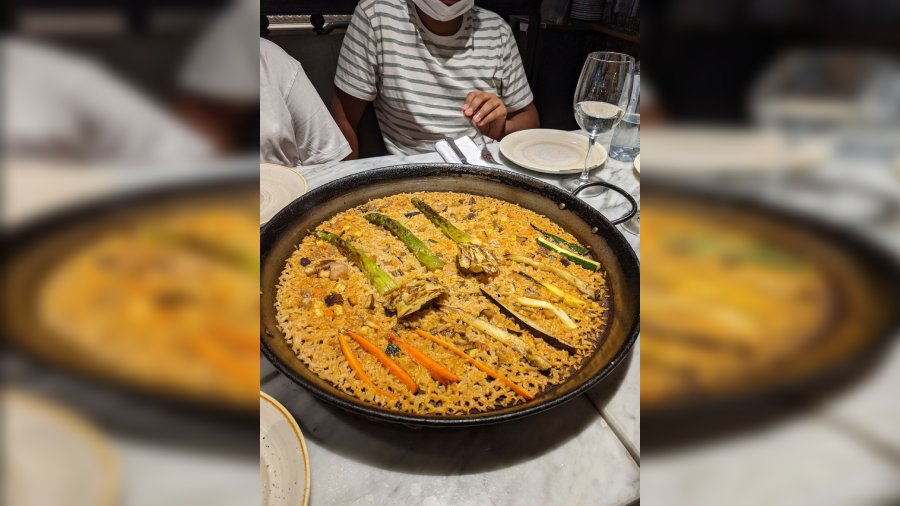When we think of Spanish food, the word ‘tapas’ just pops straight out and soon you imagine small plates of local delicacies making their way to the table while you break some bread and dip into the aioli.
This is what I had imagined my trip to Spain would be like. Having been to the country 20 years ago where the only vegetarian food available was spinach with garbanzos (Spanish for chickpeas) and potatoes in aioli (a paste of garlic and olive oil).
And like all things evolve, so must the food scene in this beautiful country which is now famous for its Michelin star restaurants and international flair, not to forget the afternoon siesta post a heavy lunch.
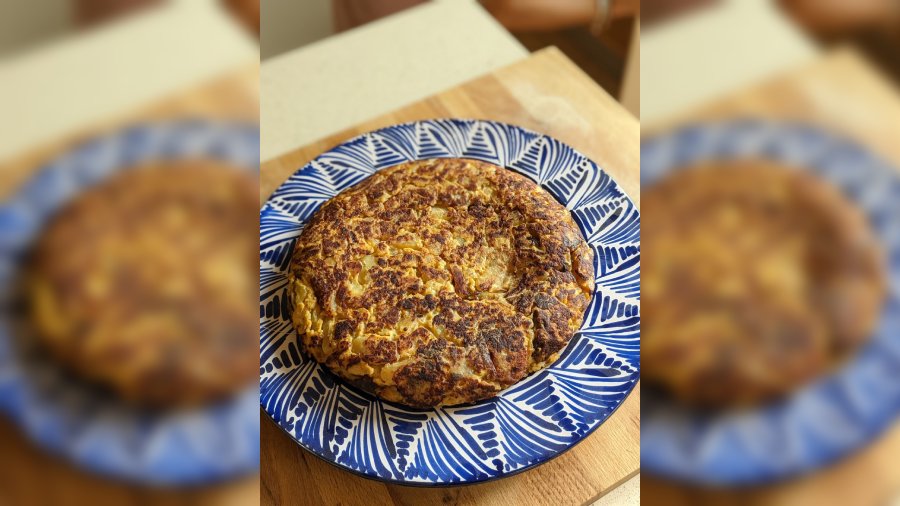
Spanish tortilla is ubiquitous and good for any occasion or time of the day.
Before I dive into my food escapades, it’s important to understand a little more about Spain. It’s one of the only countries in Europe to have a culture of a late dinner, late lunch and the afternoon siesta. It all came from the Arabs who ruled this land centuries ago but left their customs behind.
A lot of the food is inspired by the Arabians, like the paella, which is cooked with herbs and spices. Also, a very important ingredient, chickpeas, which was introduced into the Spanish culture, is not very common in the rest of Europe.
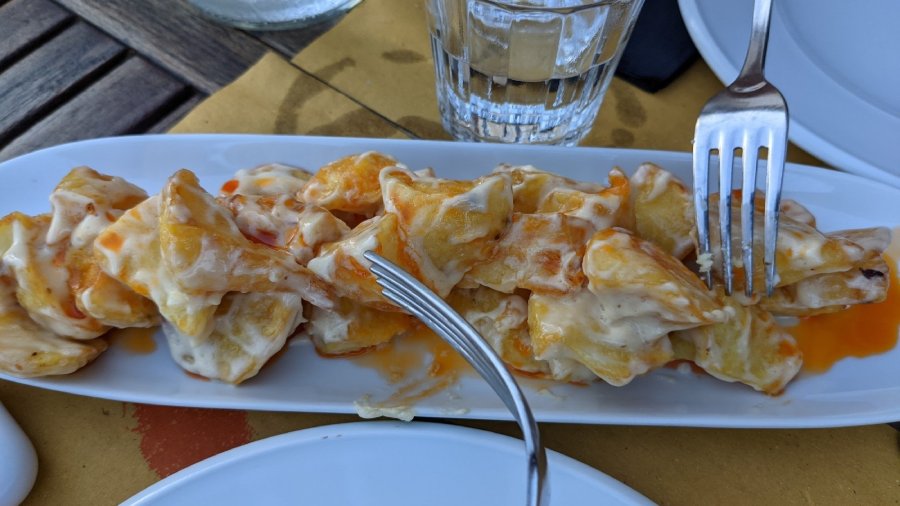
Patata bravas, which takes its name from the Costa Brava region, is a common offering.
So, coming back to my delectable trip, it started from Costa Brava — ‘the brave coasts’ as the waves lash the shore with vigour and strength. This part of Spain is called Catalonia, and they speak a different dialect of Spanish too. The food mainly consists of fresh vegetables like tomatoes, eggplants, artichokes, zucchini and flavourful oils and vinegars, vibrant cheese and nuts. One definitely feels the punch with every mouthful.
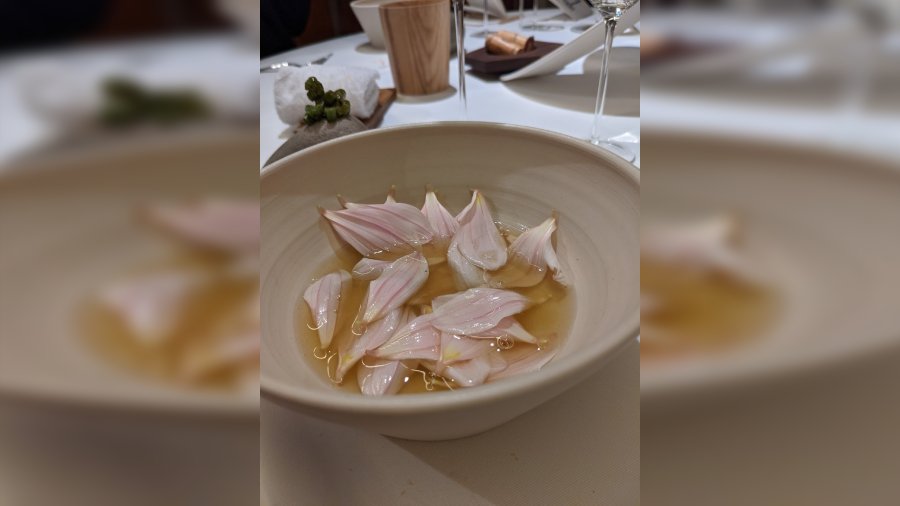
Aioli is another popular item that’s often had with bread.
Gazpacho is the uber famous cold soup made with juicy tomatoes, cucumbers, loads of lemon juice and a choice of fruit to add the twist. I’ve had gazpacho with cantaloupe, strawberries and even musk melon. You will even find a recipe of a strawberry gazpacho I learnt in Barcelona.

With owner and sommelier at Josep Roca at the three-Michelin-star El Cellar de can Roca in Girona.
Also, very famous in this region are patatas bravas. Taking the name of the place, this dish has innumerable versions. But what’s ubiquitous in this dish are potatoes and chillies. The bravas sauce is spicy and can be flavoured with fresh herbs and vinegar and always a lot of garlic. It’s a popular tapas dish too.
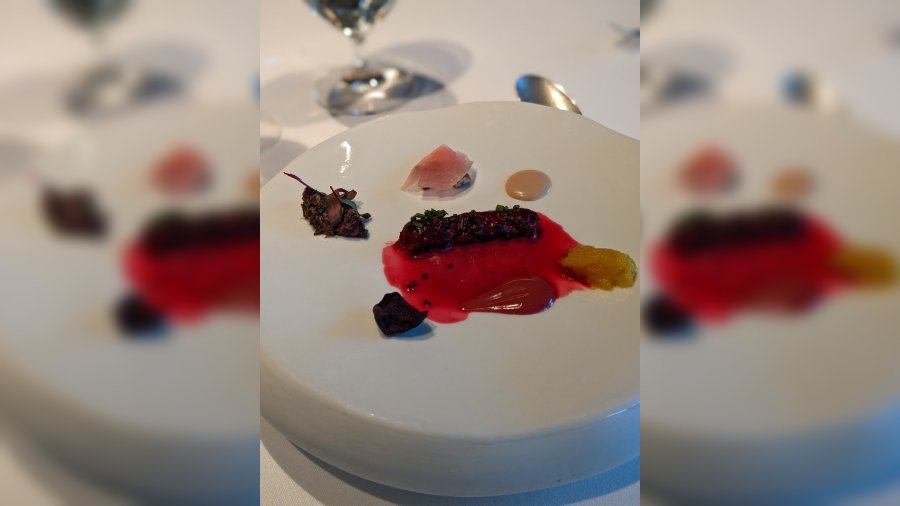
One of my favourite courses — a dish of only beetroot — red beetroot, yellow beetroot, fermented beet, beet puree, dehydrated beetroot and pickled beetroot and it was an incredible dish with different textures of the same ingredient.
And how can I not mention Spanish tortilla, or the omelette made of eggs, potatoes and sometimes cheese. It’s easy, it’s fuss-free, it can be had warm or cold, as tapas or main course, at any time of the day and even stays well for two days. Served in slices as tapas, one can never go wrong with this dish.
Disfrutar
And the journey continues further south, still part of Catalonia but now it’s hip, it’s crowded, it’s international and it’s Barcelona. Our first meal was a complete surprise —Disfrutar. Ranked No. 5 in the world’s 50 best restaurants, the name means ‘to enjoy’ in Spanish and enjoy we did.
Twenty-four courses explored every sense from taste, smell, sight, touch and sound. Courses tricked our mind with textures that didn’t taste like what they looked. Alcohol was sprayed on our hands so we could smell it while we popped food into our mouth using our hands. This four-hour culinary experience is like no other I have ever experienced and definitely not a meal to eat with your eyes first as you never know what it is you are putting in your mouth.

The author with Chef Oriol Castro, one of the three chefs and owners of the two-Michelin-star restaurant Disfrutar in Barcelona.
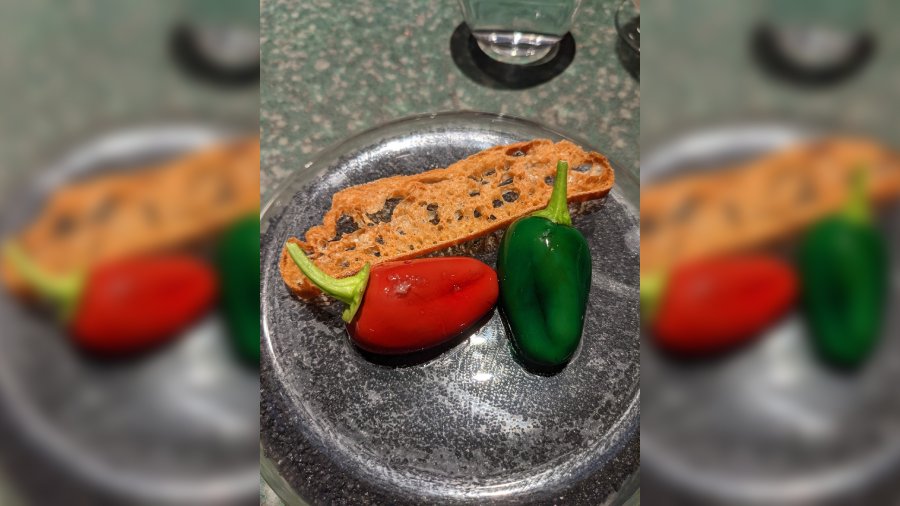
Two-Michelin-star restaurant serves padron chilli peppers that are chocolate ganache and served as a dessert
Edible paper crinkled in our ears, smoke covered our eyes, bubbles burst in our mouths and it felt like we were in a game show, enjoying each course as an act.
We had the pleasure of meeting Chef Oriol Castro, one of the three chefs and owners of the two-Michelin-star restaurant, who had started working at the legendary El Bulli.

Two-Michelin-star restaurant serves dishes like a sandwich that is made of meringue and has gazpacho in between
You can get a sandwich that is made of meringue and gazpacho in between. Padron chilli peppers that are chocolate ganache and served as a dessert. Asaparagus tips jutting out but secretly rolled with asparagus mousse served with Emmenthal soil. Fried eggs that miraculously kept the yolk runny inside.
A snake of green balls that looked like peas but were spheres of pesto. Salad that is served as a liquid with the dressing as a foam. You will be left bowled over, mind boggled and completely mesmerised by this immersive experience.
El Cellar De Can Roca
The next day we received a surprise confirmation from the world’s best: El Cellar De Can Roca in Girona. So, we drove out 60 minutes from Barcelona for a once-in-a-lifetime meal at this coveted three-Michelin-star restaurant. Run by the three Roca brothers since 1986, I won’t be able to do justice with words to describe this culinary journey.
Each table has three stones representing the three brothers — Joan the head chef, Josep the sommelier, and Jordi the patissier. One of them will always come personally to each diner’s table elevating the level of this already-so-awesome experience. The dining room is a triangular cloister receiving natural light from an internal forest in the centre of the space. This makes dining in the day a beautiful experience, as if you are sitting amidst nature.
The food is traditional Catalan cuisine with the chef’s creative juices flowing in every course. We took the tasting menu of 26 courses. The service is like an orchestra playing a symphony that is synced to perfection with a palpable rhythm.

Tapas is synonymous with Spanish food.
Some of my favourite courses — a dish of only beetroot — red beetroot, yellow beetroot, fermented beet, beet puree, dehydrated beetroot and pickled beetroot and it was an incredible dish with different textures of the same ingredient. This is creativity to me, to see magic from an ordinary vegetable that many detest (including my husband) but devoured it with great joy.
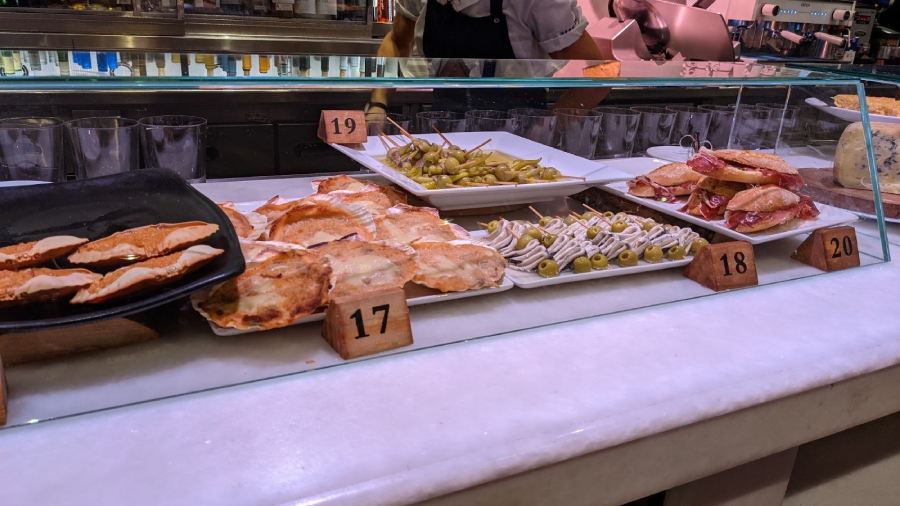
Counters are decorated with appetising small plates for customers to choose from.
Another favourite was the onion flower with all thing onions and I am not a fan of onions but this barely even tasted like the raw onions we eat with our Indian food. It came in glamorous new avatars of steamed, pureed and poached, punching unknown flavours, leaving the diner flabbergasted.
This wrapped our delectable time in the region of Catalonia before we headed to the Basque country.
San Sebastian
I think one can write an entire book on the food scene in this resort town. Sitting on the border of France and Spain, San Sebastian has a culture like no other. They speak a language called Basque that is not taught in schools but just picked up while living in the town.
It has the highest number of Michelin stars per square kilometre apart from Kyoto, Japan. Its unique style of tapas called pintxos (pronounced pinchoes) makes this Spanish town the food capital of the world.
Mugaritz

Mugaritz is playful, avant garde and extremely innovative. One can love it or hate it. There is no middle ground.
Our very first meal was at Mugaritz, the world’s eighth best restaurant that holds two Michelin stars. It is located 20 minutes away from the city by car. Mugaritz is playful, avant garde and extremely innovative. You are welcomed in their beautiful garden and then led inside the traditional Basque country house. The interiors are complete with wooden beams and walls. There are 20-30 courses, which change over the eight-month season. Each dish draws from the rich Basque ingredients.
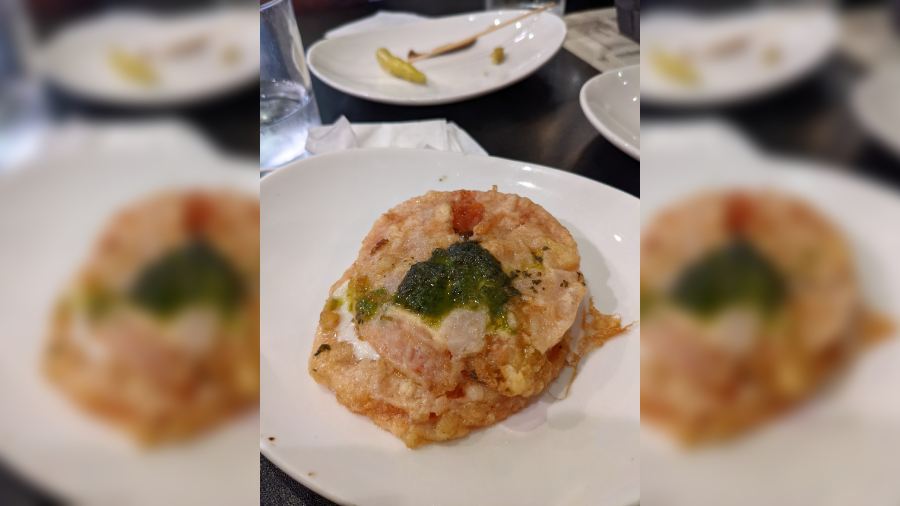
Courses came without cutlery, food pasted onto the plate which we had to pick up and lick off. What makes the food at this restaurant so unusual is the choice of ingredients. There was a soup of flowers, the mould of Roquefort cheese, part of a honeycomb, the burnt part of a paella and much more. The service staff have been instructed not to inform the diner about the course they are about to relish but they are left to guess the ingredients they just consumed.
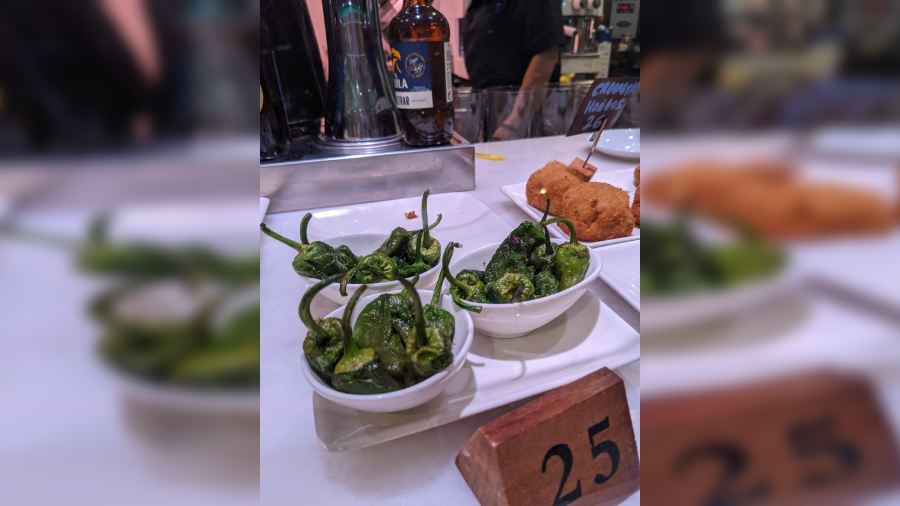
Mugaritz is a highly unique and innovative restaurant. One can love it or hate it. There is no middle ground but be prepared to have your tastebuds tantalised through the experience.
PINTXO BARS
The old town of San Sabastian is dotted with pintxo bars, each having their own speciality. Counters are decorated with appetising small plates for the customers to choose from. Most of the pintxos are on bread like an open sandwich. Some have baguette sandwiches and some are fried tapas to delve into. Some of my favourites were the tortilla on baguette, tomato, cheese and pesto melted and oozing out on a piece of bread and skewers of pickled chilli, olives and meat. One can even get raw fish pintxos, with cold cuts served on bread, boiled eggs, cheese, not to forget the pedron peppers and fried cod balls.
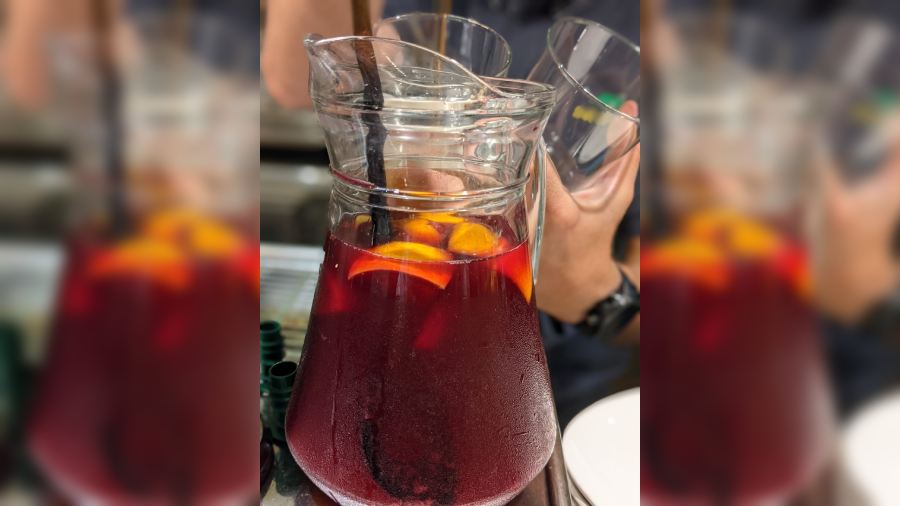
Pintxos and sangria go together at San Sebastian’s pintxo bars
These are washed down with yummy sangria and a person is meant to hop from one bar to another trying only one or two pintxos in each place.
And how can we not speak of the quintessential paella? Spiced rice with a choice of veggies, seafood or chicken cooked in a large flat pan to get the maximum surface area for the rice to absorb all the flavours. This is honestly my favourite dish in the entire Spanish cuisine. To adapt to the modern day, eating houses have rustled up vegan paella and even sell it as gluten-free food to appease all kinds of diners.
ARZAK
They say, save the best for the last and so we did. Arzak. It serves modernised Basque cuisine in an old, multi-storied brick building that houses a wine cellar with over 100,000 bottles of wine, a test kitchen with approximately 150 ingredients from all over the world, and a dining room for 60 guests.
We were served a nine-course meal that blew my mind. Each dish was wholesome, tasteful, creative and a relief from all the experimental foods we had devoured over the previous few days. The head chef, Elena Arzak, is the granddaughter of the founder of the restaurant, which was then taken to fame by her father Juan Mari Arzak. It is a three-Michelin-star restaurant and the only one to hold it for 35 years! Elena has been awarded the world’s best female chef for many years and it was an honor to interact with her and understand the pulse of Arzak a little more.
Pictures by the author
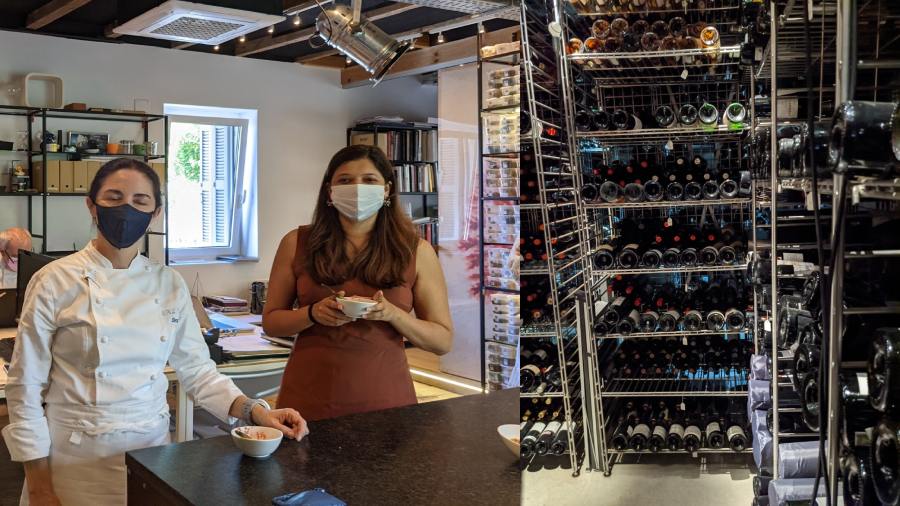
With Chef Elena Arzak in the test kitchen of Arzak; and the 3-Michelin-starrer’s wine cellar
Manjri Agarwal is director of Tastebuds Gourmet Foods. She can be reached at manjria@gmail.com. Find her on Instagram @bigplatesmallplate and on Facebook at Big Plate Small Plate
